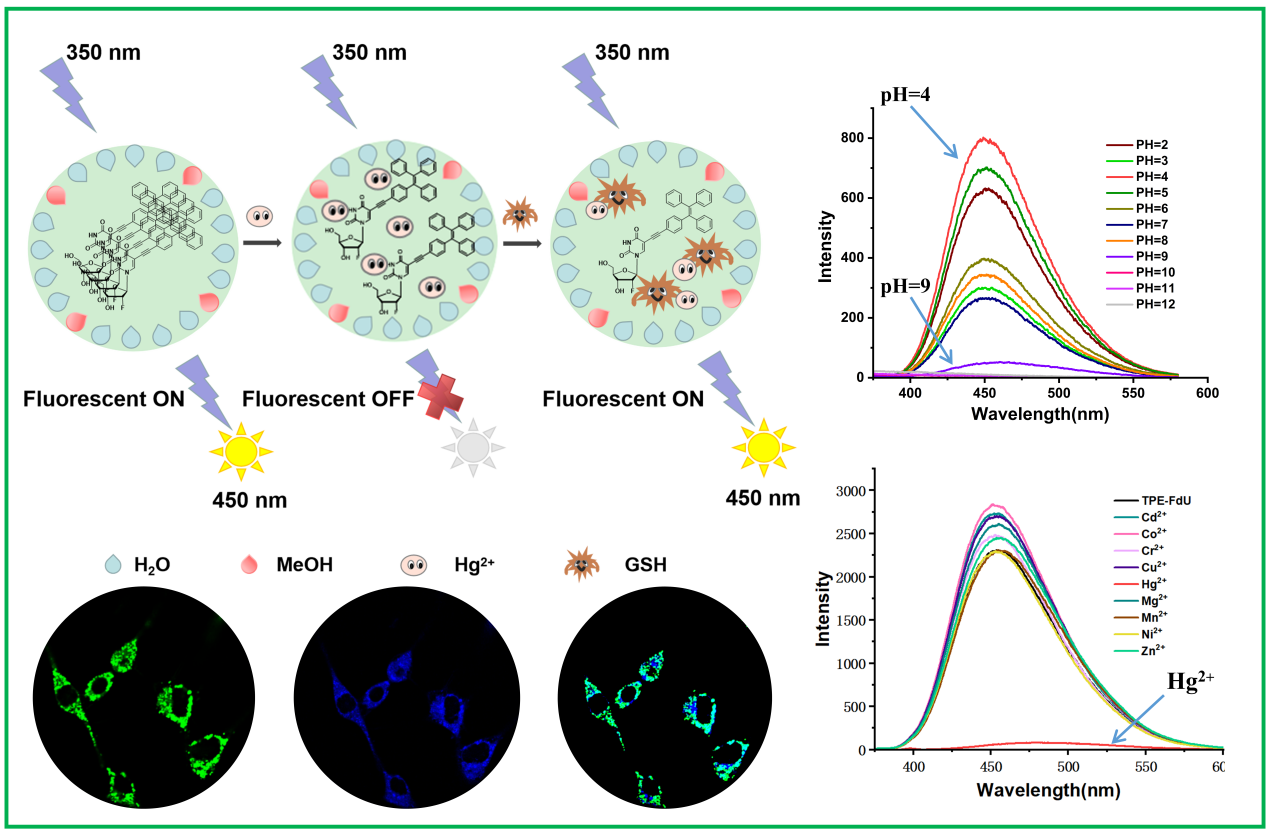Recently, Prof. Xiong group from the Institute for Advanced Studies at Shenzhen University published a research paper titled “Enhancing or Quenching of a Mitochondria-Targeted AIEgens-Floxuridine Sensor by the Regulation of pH-Dependent Self-assembly, Efficient Recognition of Hg2+, and Stimulated Response of GSH” on Analytical Chemistry (https://doi.org/10.1021/acs.analchem.3c04415). Prof. Hai Xiong is the corresponding author, and Ms. Yating Zeng is the first author. Institute for Advanced Study of Shenzhen University is the only affiliation.
Biocompatible fluorescent probes have emerged as essential tools in the life sciences for visualizing subcellular structures and detecting specific analytes. Herein, we reported the synthesis and characterization of a novel fluorescent probe (TPE-FdU), incorporated with hydrophilic 2′-fluoro-substituted deoxyuridine and hydrophobic ethynyl tetraphenylethene moieties, which possessed a typical aggregation-induced emission (AIE) behavior. In comparison to the TPE-FdU (pKa 7.68) treated in neutral conditions, it performed well at pH 4, exhibiting an enhanced 450 nm emission signal of approximately four times stronger. As the pH value was increased to 10, the fluorescence intensity was completely quenched. The TEM images of TPE-FdU in acidic environment (nano-spherical morphology, AIE enhance, pH=4) and in a basic environment (microrods, fluorescence quenching, pH=9) revealed that it was apH-dependent self-assembled probe, which also illustrated by the interpretation of the NMR spectrum. Furthermore, the TPE-FdU probe exhibited a specific response to trace Hg2+ions. Interestingly, the quenched fluorescence of the TPE-FdU probe caused by Hg2+can be recovered by the addition of GSH due to the formation of the Hg-S bond released away. MTT assay and CLSM images demonstrated that TPE-FdU was nontoxic and selectively visualized in the intracellular mitochondria. These results contributed to the development of advanced fluorescent probes with diverse applications in cell imaging, environment protection, and biomedical research.



